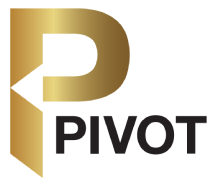Are you running out of time on the reading section?
Timing can be tough on the Reading sections of the SAT and ACT tests. The time limits mean that you have to read and answer the questions super efficiently! To that end, you have probably heard that it’s important to know how to skim. This popular reading strategy can help in testing scenarios, but also even during normal study and research.
But it may surprise you to learn that “skimming” does not just mean “reading fast.”
What is skimming?
Skimming is not…
-
Reading everything fast
-
Reading lazily
-
Reading without attention
Skimming is…
-
Reading intentionally and with attention
-
Searching for organizational clues, shifts, and other signposts
-
Picking out important ideas and not spending time on details
…in short, it’s a way to “work smart, not hard.”
How to skim as a reading technique
You might be asking, “How do I know what parts are important without reading everything? Don’t I have to read the unimportant parts too in order to judge which to ‘keep’ and which to ‘leave?’”
To make the absolute most informed decision, yes, you do have to read everything. But if you are pressed for time, the skimming method will still provide a really good chance of picking out the good stuff.
Fortunately, many authors – especially of scientific or persuasive articles – observe organizational conventions that can help us skim effectively. Frequently, they will use an introduction and conclusion and put their most important ideas there. Transition sentences and introductory sentences in body paragraphs are specifically meant to serve as guideposts for readers like us. Formatting tricks like headers, titles, italics, and quotation marks are all meant to emphasize important ideas, key terms, and conceptual shifts. Thus, there’s a fair chance that by paying special attention to these “geographically” significant locations – beginning, end, and “signposts” in the body of the text – you will already be focusing on the areas that contain the most significant content.
What to read:
-
The title of the work and the blurb
-
Introductory and concluding paragraphs
-
First and last sentences of each paragraph
-
Italicized words, quotations, headers, titles of diagrams
Read actively: annotate, make connections, observe how the text “moves” from one point to another. What ideas were emphasized at the start? How about at the end?
I skimmed the passage. What now?
Standardized tests can be extremely mechanical in terms of what information they require you to know and where it can be found. Here’s an example. It’s not important to read the passage--just notice the location of the highlighted parts. These contain the material you need to answer specific questions.
I have not highlighted the answers to questions that already provide specific line numbers. These highlighted portions pertain to conceptual or big-picture questions that do not provide those very helpful location clues (“at line 43…”). This question type can be time-consuming and difficult – if you read the whole essay again instead of skimming.
Isn’t it interesting how the first paragraph is super important, the first sentences of each paragraph all contain question-relevant content, and the conclusion also has a pretty dense relevant area? Finally, the expert quotation (in the last paragraph) also plays an important role.
Skimming as a path to deeper understanding
Time and time again, you will notice that the ACT or SAT questions are “geographically” based; answers can be found in predictable locations. It can seem pretty mechanical in that way.
But it’s not that articles should be written by machine, or that standardized tests purposely ask about intros and conclusions: this example just speaks to the fact that writing is all about communicating and conveying information, and to do this, writers often (though not always!) format their work specifically to help guide you, the reader, to that information. Introductions establish context and tell us what the article will be about; conclusions restate the premise or develop it; topic sentences guide us through shifts in logic or topic; quotations are used to emphasize points.
These patterns and conventions can serve as extra support for making a well-argued or well-explained point. Because writers and readers already somewhat agree on where the important info will go, communication becomes more efficient and streamlined. The writer doesn’t have to waste time making up a new structure or explaining her organizational scheme; we readers already know where to look.
Thus, skimming is often a way to engage more critically with the text, not less; it’s a way to extract the most important ideas, follow the signposts the author has provided, and finally visualize how the supporting information “slots in” around them.
May you read efficiently, intentionally, and with deep understanding!

